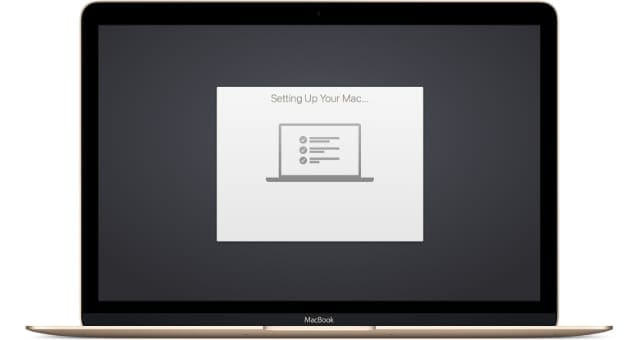

Might your having reported on Public Beta 4 while Beeston reported on Public Beta 5 (updated with a reference to macOS 10.13 Developer Preview Seed 6) account for your different experiences?Good thought Artie. I cannot explain Beeston’s experience or what the delta might be. Neither computer had ever been formatted anything but MacOS Extended (Journaled).Obviously this does not constitute a comprehensive test of all the possible permutations but still it seems significant. The Recovery Drive installation was on a brand new MacBook Pro.
#Os x base system grayed out 2017 mac#
It was a day or two later when I noticed, to my great surprise, the internal SSD had been changed to APFS so I mounted the external drive and to my great surprise, it too was formatted APFS.The external drive was formatted and High Sierra installed while it was mounted on my wife’s Mac mini running Sierra.
#Os x base system grayed out 2017 mac os#
That installation was accomplished by downloading the Public Beta installer using the beta installer utility downloaded from the Apple’s developer site after authorizing the computer the utility downloaded and ran the full install from the App Store.Later I booted the Recovery Drive on the external volume, used the included Disk Utility to erase the internal SSD on a MacBook Pro to Mac OS Extended (Journaled), then ran the Recovery Drive’s MacOS install routine. So, why not allow/provide for that in the 10.13 betas?I've stopped testing the PB as Finder bugs from 10.12.1 have still not be touched and I'm mainly interested in by Beeston ( 08/16/17 03:49 PM)#46023 - 08/17/17 02:20 PM Re: APFS not an option in latest High Sierra betas.Registered: 08/03/09Loc: Portland, Oregon, USA.Īll I can say is I did a clean install of Public Beta 4 on an external drive over a USB 3 connection that I had just erased to Mac OS Extended (Journaled). In 10.12 I was easily able to convert the same Firewire drive to APFS. I don't know why that would be so but, anything goes with Apple's betas.Apple have been playing very oddly with the implementation of APFS. Perhaps that was because you also had an SSD. You've found that you got APFS automatically on a HDD. So, I currently have a running copy of PB5 which I can't convert to APFS.I suspect that in the beta versions of 10.13, APFS is limited to Macs with an SSD. So, I rebooted to the Recovery volume and opened Disk Utility to try to convert to APFS. During the process, there was no option to install APFS and the drive remained HFS+ – it was not automatically converted. So, it was still HFS+.Anyway, I booted to the 10.13 Recovery volume and re-installed macOS. After installing PB4 on an external Firewire drive I found it would no longer boot. Sorry to rain on the parade but, I've just had a very different experience with Public Beta 5.

My tests showed it to give noticeable better performance than HFS+ even on rotating rust. At least the conversion is non-destructive.FWIW other than an initial glitch with Time Machine and encryption, I am quite happy with APFS. Whether this will be true in the final version, I don't know. With no question and no notice the installer reformatted the drive APFS.It appears that the PREFERENCE of APFS for the boot drive has become a REQUIREMENT. To verify this was not a function of an SSD vs Rotating Rust, I erased an external HD to MacOS Extended (Journaled) a.k.a. I noticed a significant change in the installation process.In Public beta 1 (Developer beta 2) the installer offered the OPTION of MacOS Extended format or APFS.There is NO OPTION in the current beta installer, APFS is installed automatically. Due to computer problems I got a new 13' i7 MacBook Pro and elected to install the High Sierra Public Beta. I am posting this outside of my ongoing thread about my adventures with the High Sierra beta to be sure it is noticed. Just click on the “Convert” button to initiate the process. This will generate a pop-up message asking you to confirm your choice. Alternatively, you can also go to the Edit menu and click on the “Convert to APFS” option. Right-click the drive and select the option of “Convert to APFS”. Boot the Mac into Recovery Mode by holding down the Command and R keys until you see the macOS Utilities screen.


 0 kommentar(er)
0 kommentar(er)
